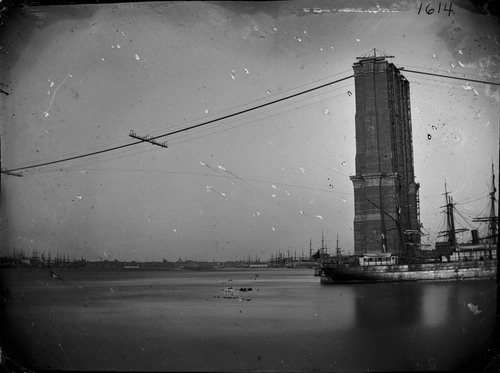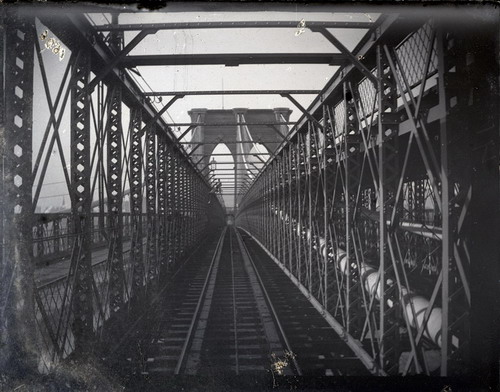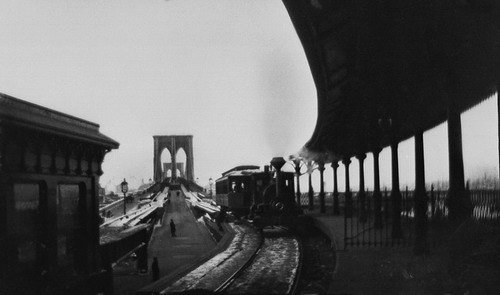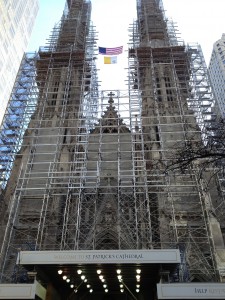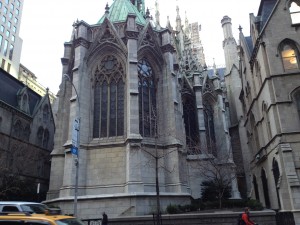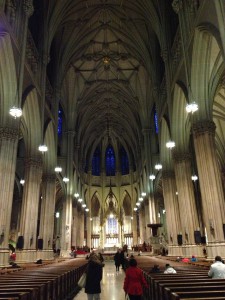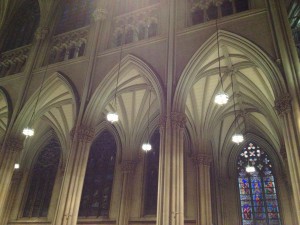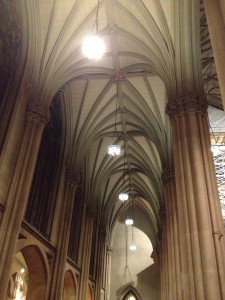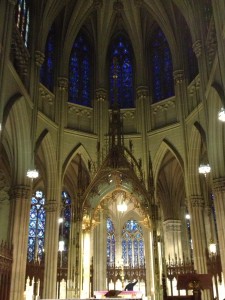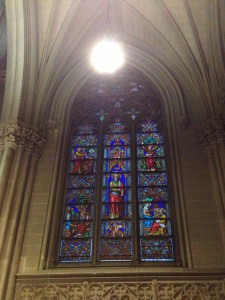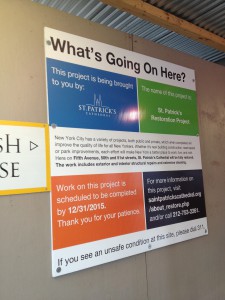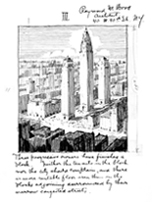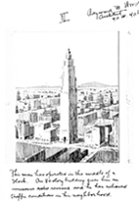Austin Felix
English Final
After a long ten years of controversy and planning the Nets basketball franchise are welcomed to the Atlantic yards in the new Barclays Center. This new building with a non ordinary exterior provides the new community with entertainment hosting sporting events concerts and more. Barclay’s Benter gives Brooklyn a major sporting team after the many years of not having one. This new facility will open up multiple opportunities to the community offering jobs and attracting people to the Atlantic Terminal Mall.
As described in “”Writing about Architecture” by Alexandra Lange there are four ways to critique a piece of work. The formal, experiential, historical and activist critiques are the options to begin a critique. Looking into Barclays Center’s purpose, development, design and affect on Brooklyn’s history makes it a great example for each form of critique.
FORMAL
First look at the new facility and a view of this dynamic curve and unusual use of material as a finished exterior is what stands out. This building has a rusted color exterior giving it a rough look different from anything seen in the Atlantic yards area. Barclay’s Center is designed by the architect firms Ellerbe Becket and New York City firm SHoP Architects. A major component of the arenas design is its pre-weathered steel façade and glass structure. As a 21st century building the use of these two materials are common. As architecture begins to modernize the common materials for new structures are glass and steel.
An 117-by-56-foot “Oculus” extends over a 5,660-square-foot section of the plaza outside of the main arena entrance, and contains an irregularly shaped display screen that loops around on the inside of the structure. This part of the structure is the most eye catching as its curves create a surface that appears to be soft but the façade still provides a rough texture. These two ways of viewing the design are what make it so unique and sets a great example for working with materials and creating a design to provide multiple thoughts.
The façade of the arena is modern but as for color not really. The pre weathered steel has a brown color. Different from modern designs now that follows shiny steel or
metal and glass properties. The LCD screen located within the Oculus also provides much lighting and color to the entrance. Its bright colors and light displays the building name, upcoming events and advertisements. It’s a great way to gather the attention of the neighbors of the community or visitors
HISTORICAL
Going back to as far as 1956 when the Brooklyn Dodgers moved to Los Angeles this new arena has many effects on history. Major league sporting teams are found all over the US and these have the power to bring together the people in that community and supply them with a source of entertainment. Sad to say since the Brooklyn Dodgers relocation up until 2012 this community had now major league team.
“Welcome to Brooklyn” as the advertisements read all over Brooklyn welcoming the Nets basketball franchise. Sports play a big role in communities and now with the Barclays Center complete Brooklyn’s residents may now feel their community is complete.
The new arena may be complete now and a success but there have been many controversies over the Atlantic Yards Project. The Atlantic Yards located in Prospect Heights was going under a major renewal. *Empire State Development, in conjunction with the Metropolitan Transportation Authority (MTA), the City of New York, and affiliates of the Forest City Ratner Companies, proposes to implement the Atlantic Yards Project in two phases. Phase 1 includes the Arena, four residential and commercial towers, along with an updated MTA rail yard and a brand new subway entrance (cited #1). Urban plans were to add more mixed use and residential spaces for the area were underway.
As always money is a big supporter and when money goes wrong everything else does. The MTA set a bid for the area but higher bids were being placed eventually reaching a limit with FCR companies.
ACTIVIST
Social and economic benefits are a great advantage due to the Barclays Center and the rest of the Atlantic Yards proposals. The Nets franchise alone has great social uplift. Welcoming this franchise opens up the community making people fans and supporters. The games held with the arena aren’t just for entertainment and to watch a basketball game. There is a sense of fun and unity between the people.
As an example Hurricane Sandy was a disaster hitting NYC hard and causing much damage. The NY Knicks vs. Brooklyn Nets was supposed to the opener for the season in the new arena. Unfortunately it was postponed and within the next day or two the NYK had a home game against the Miami Heat here at Madison Square Garden. At this time the people of NYC were still in shock from the effects of the hurricane but the game went on. The significant part was fans although in hard times traveled and were able to enjoy a Knicks victory at MSG setting aside the aftermath of Sandy and putt smiles on their faces. I believe that is a great social impact to the community done by the Knicks franchise and MSG and have strong feelings Barclays Center and the Nets would provide the same for the community.
Economically the arena may have been part of a multibillion dollar project but it has a positive affect for the people. According to NYtimes article “In Brooklyn, Bracing for Hurricane Barclays” Liz Robbins says 10,000 or more jobs should be available soon. The new high-rise condos will also provide residential spaces generating money from buyers. Overall the presence of this new 22 acre renewal will bring to businesses all around money by just attracting the many people traveling to and from the area.
EXPERIERNTIAL
As a big basketball fan and a Brooklyn native the Barclays Center is a huge excitement. The news of the Nets moving to Brooklyn definitely caught my attention and as an architecture student I fell in love when seeing this new arena.
The Barclays Center is very local and take me about 25 minutes to get there allowing me to visit multiple times. I have witnessed the progress of the new building from start to finish. My first visit to the inbuilt arena I was in a state of curiosity. I saw the work that was being done as a question mark.
I found that feeling pretty normal being that it was just framework. About 2 years later there is a little more progression but that curiosity is still what I felt. At this moment I spot curves in the structure few glass components but not much color. This great positive curiosity made me more eager to see the completed project.
2012 is here and I am at the Atlantic Terminal mall across the street from the arena and watching these rusted panels be laid out on the side of the building. Still with a curious thought I ask myself many questions; Why are the rusted frames laid into a pattern, what is the glass façade finish going to look like, what color lights are going to be used and how?
In the shortest amount of time I hear a news reporter stating the Barclays center is now complete. Arriving to the site and standing a few feet from the entrance I get a feeling of success and rebirth. Strangely the curiosity remains, the rusted panels I were watching be placed are the exterior finish and it’s something I knew seen before. The color and pattern say a lot about the architect and design for the future.
I admire this arena not only because it is a reflection of self but because that curious feeling I received from just looking at the frame stayed with me till the end of construction and still today. Using a rusted pre weathered steel as an exterior finish creating smooth curves and gave a rough tough look for the building is very out of the box of anything I seen before.
Works Cited
1. NYS Empire State Development
Link: http://www.esd.ny.gov/Subsidiaries_Projects/AYP/AYAboutUs.html
2. New York Times
Link: http://www.nytimes.com/2012/09/23/nyregion/with-barclays-center-arena-set-to-open-brooklyn- braces-for-the-storm.html?pagewanted=all
3. Writing about Architecture: Mastering the Language of Buildings and Cities (book)
Alexandra Lange-published byPrinceton Architecture Press 2012

